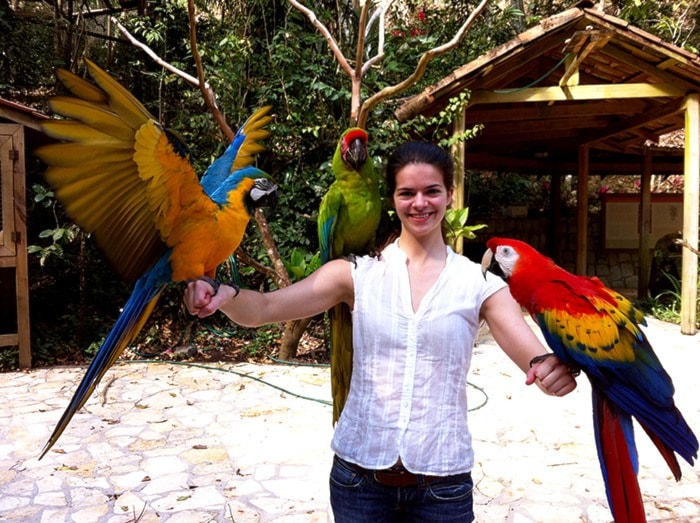The path to becoming a midwife is not always a straight line, which Carmen Wiebe can tell you from her most recent experience in Honduras.
Wiebe was finding it difficult to get into any of the five midwifery schools in Canada and decided to add something to her resumé in the form of volunteering through Dar A Luz Honduras.
“Dar A Luz is a program that works to improve maternal and infant health,” Wiebe said. “Dar a luz literally means to give light, but it also means to give birth in Spanish.”
She couldn’t find many opportunities to volunteer as a doula, which she has had the introductory training for since 2010, in Canada so she looked further afield.
“There were opportunities in Africa and Haiti as well,” she said. “But Honduras was way more affordable and worked within my timeframe.”
Wiebe has also taken midwife assistant training in Tennessee and a peer she met there had also gone to volunteer with Dar A Luz, she said.
The healthcare system in Honduras is much different, as Wiebe found out quickly.
“All the women give birth in one room,” she said. “It was hard to get used to at first. There was so much going on in that room and I just focused on finding a woman I could help and did what I could for her.”
Family members are not allowed to be in the room during labour and Wiebe didn’t really have much in the way of an understanding of the spanish language, but that didn’t stop her from making connections.
“This one woman that I could tell really wanted me to stay,” Wiebe said. “But it was getting dark and I needed to get to where I was staying.”
Honduras has a very high crime rate which forced Wiebe to limit her doula duties, that would normally require staying with a new mom for a long time after birth to assist in any way.
Her inspiration for becoming a midwife was from another interest of hers – reading – that and a lack of courses at Simon Fraser University in gender and women’s studies.
“Being a doula isn’t the most popular profession and most people thought I
was going to become a teacher or something,” Wiebe said. “Unless you grow up and are surrounded by birth, I’ve found people don’t really think about it as an option.
“I became interested in becoming a doula and midwife after reading The Birth House.”
The Birth House is a novel by Canadian author Ami McKay that was inspired by the actual life of a midwife, Rebecca Steele, in the Bay of Fundy, who lived in the house McKay now inhabits with her family.
Being very taken with the historical account of Mrs. Steel, the latter of which helped deliver countless infants and housed the new mom and child until they were comfortable with each other, Wiebe is now doing all she can to reach her midwifery goal.
Honduras may prove to be the last piece of the education puzzle, allowing her to attend one of three midwifery programs she has applied to.
“In Canada you have three choices for midwifery school,” Wiebe said. “UBC, Mount Royal and there are three in Ontario, but you can only apply to one at a time there. I chose Laurentian University, the school Angela Smith attended.”
There are only two midwives in the Skeena/Bulkley area, Smith being one.
“I’ve been slowly but surely pursuing midwifery,” Wiebe said. “Word from the schools I applied to should be back soon.”
